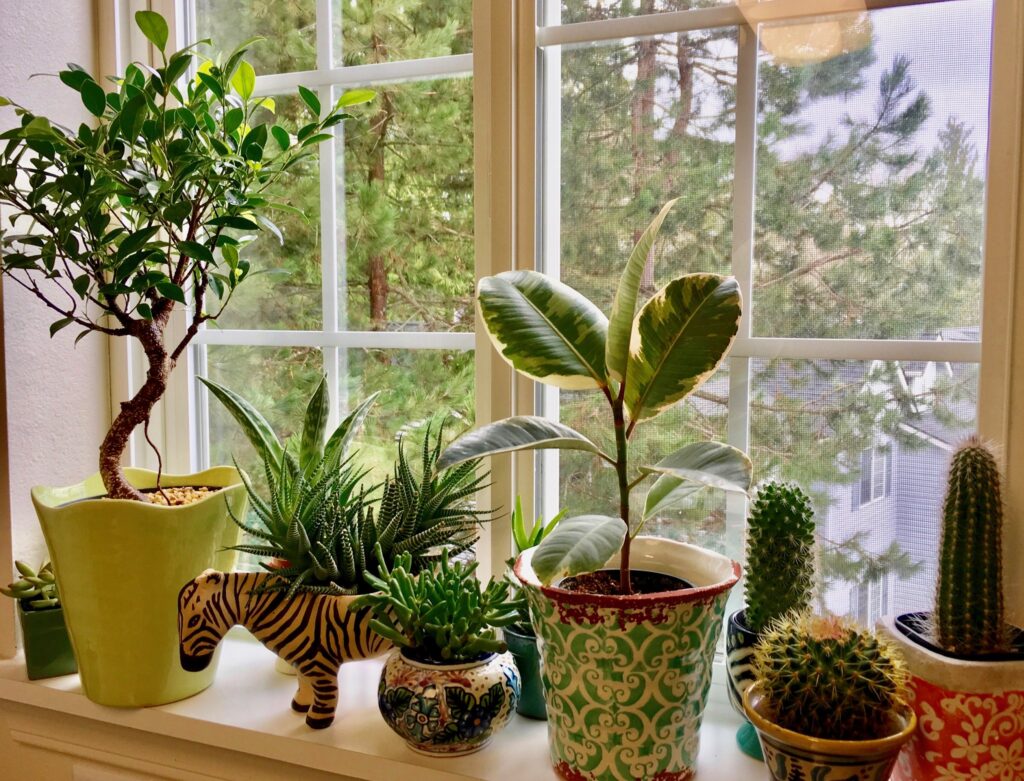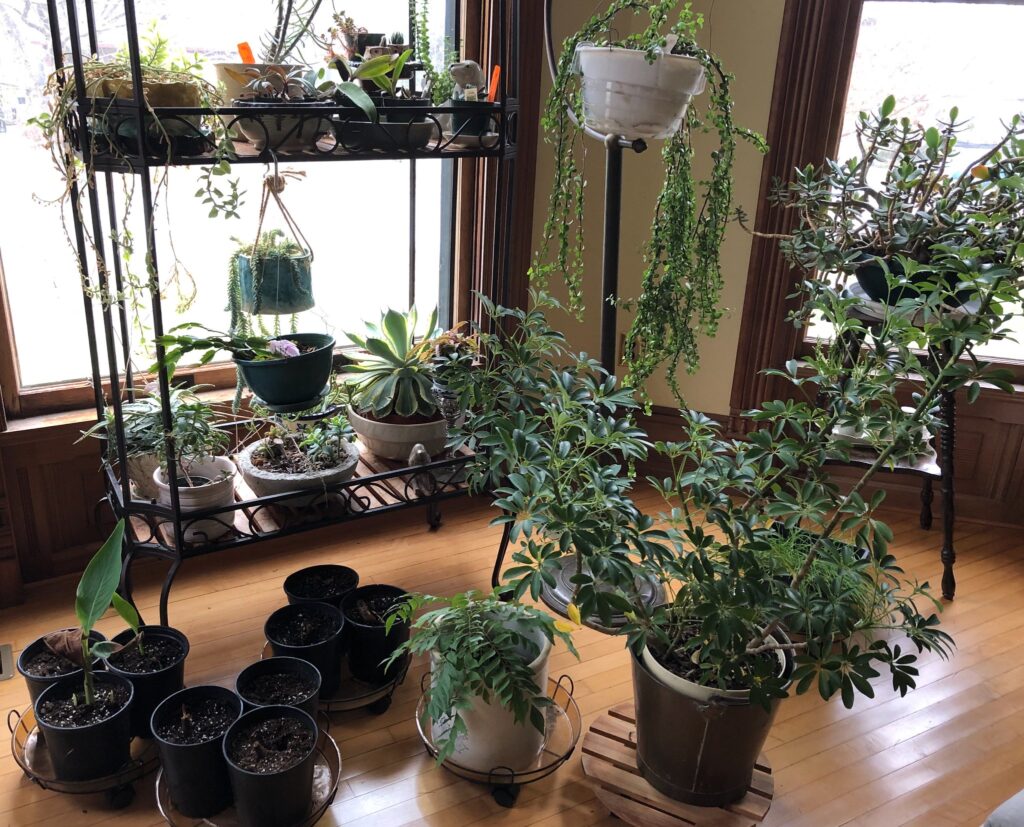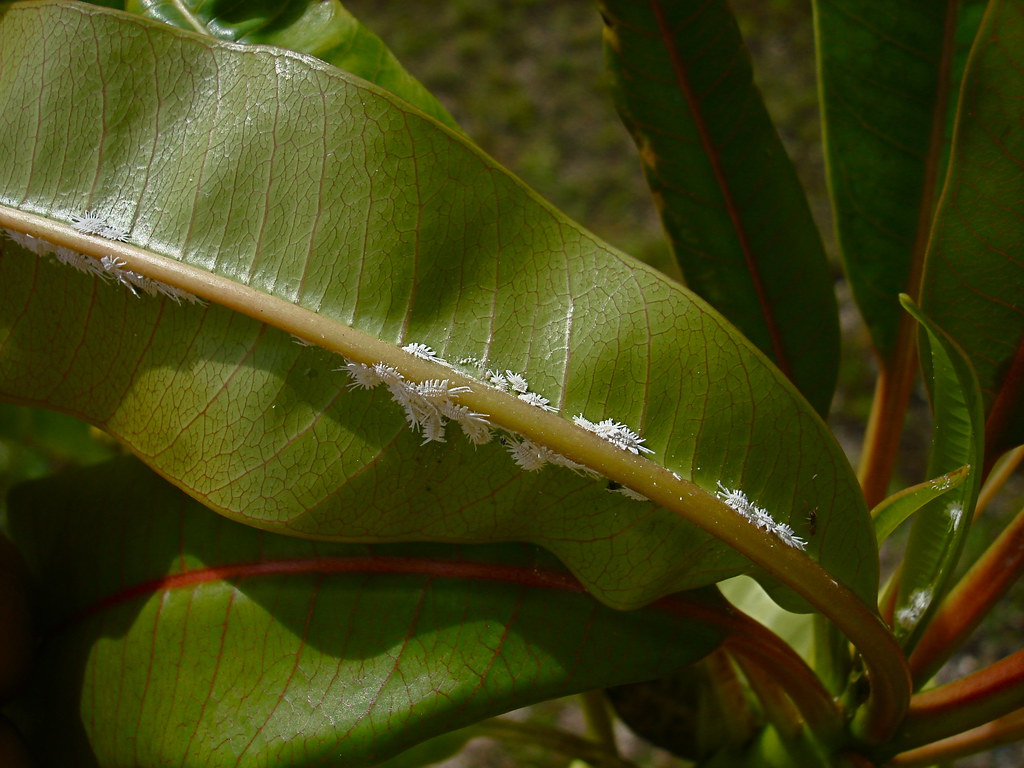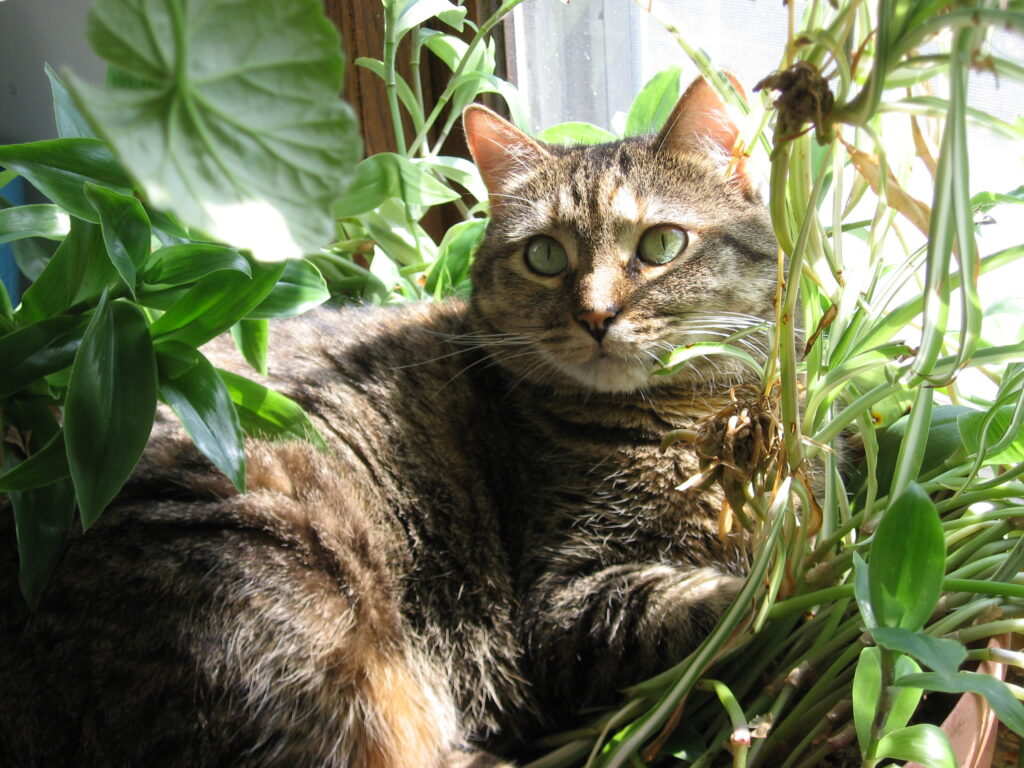Grow potted plants inside with the same safe, effective techniques you use in your garden!
Successful organic gardeners know that if you choose the right plants for your conditions, plant them in healthy soil, give them fertilizer and water judiciously, and react sensibly to problems, your garden will be beautiful, productive and undemanding. The same holds true of houseplants.
Here’s what you need to know to care for potted plants the right way that is, organically.
The proper lighting
Begin by inspecting the areas where you intend to place houseplants. Knowing how much light each site receives can help you choose the proper plants for that location. Most south-facing windows, as well as big unobstructed east or west windows, receive “high” light. Smaller, unobstructed windows to the east or west provide “medium” light. North windows, as well as those that are shaded, provide only “low” light. If your plants are more than a couple feet away from a window facing in any direction, they will receive only low light.

Buying informed and aware
Carefully read plant tags before you buy to identify suitable choices for each spot in your home. As a rule of thumb, flowering plants require high light, while many foliage plants thrive in lower light as well.
Shop around for houseplants – prices and quality can vary widely. Garden centers, home centers, florists and even supermarkets sell potted plants. When you find a plant you want, choose a balanced, evenly shaped specimen. If you’ve decided on a flowering houseplant, look for one that has plenty of buds, with just a few flowers beginning to open.
Finally, inspect each plant thoroughly to be sure it does not have disease or pest problems. Gently tug on the leaves to be sure they don’t pull off too easily – a sign of an unhealthy plant.
Watering is key
Houseplants suffer as much from overwatering as they do from underwatering. To determine if your plants need water, push your finger into the pot’s soil. If the soil feels damp, check again in a few days. When the top layer of soil is dry, water the plant.
Bear in mind that plants growing in clay pots dry out faster than those in plastic pots. Also, plants growing in “high” light need water more frequently those in “low” light. And, plants use much more water during the long, warm days of summer when they are actively growing than in the short and cool days of winter.
When you do water houseplants, give them a thorough soaking so that a little water runs out of the pot’s drainage hole and into the saucer. This flow of water through the soil is beneficial because it pushes out used air and allows fresh air to move into the spaces between soil particles. Plants’ roots need air as well as water.
If water goes straight through the pot and out the bottom, the potting soil has become so dry that it has contracted and left space where the water can run through. To water dried-out soil, set the entire pot in a bowl or sink full of water to the pot’s rim and let the soil slowly absorb the water. After the soil is wet, let it drain and then return it to its saucer.

Feeding right
The temptation to overfeed is almost is strong as the urge to overwater. But overfeeding makes the plant weak and susceptible to disease. As with water, plants that get a lot of light need more fertilizer than those in dimmer sites. And unless a plant is actively growing in winter, don’t feed it all during the dormant season.
What should you use to fertilize houseplants? Not the blue crystals you mix in water—they’re a synthetic that stimulate unhealthy growth. Instead, use a weak dilution of fish and seaweed fertilizer.
Balanced fertilizers – that is, with an equal ratio of the three main nutrients, nitrogen (N), phosphorus (P) and potassium (K) – are best for houseplants. Frequent weak applications of fertilizer are better than infrequent heavy applications for houseplants.
Potting and repotting the plants
Eventually, all houseplants need to be repotted either because they’ve grown too big for their pots or because they need to move into fresh potting mix. Generally, you should repot your plants about once every other year. Do it in the spring or summer when the plants are actively growing.
When you remove the plant from its pot, shake away as much of the old soil from the roots as possible. If the plant’s rootball is so dense and tangled that the old soil won’t shake loose, use a large knife to slice away an inch or two of the rootball on all sides and the bottom. Add fresh soil to the bottom of the pot, then set the root-trimmed plant back in and add fresh soil in the space you created around the sides.
You can use any commercial potting soil for most houseplants (avoid those that have fertilizer blended in). Your houseplants will be healthier and grow much better if you mix compost in with the potting mix. Be aware that certain plants prefer special soil mixes. Cactuses, for example, need extra sand for great drainage. Orchids generally prefer a very loose, bark-based mix. Again, check plant tags for any special needs the plant may have.
Pest and disease control
Even well cared-for houseplants occasionally suffer a pest infestation. Here are six common houseplant pests and how to control them without resorting to toxic treatments.

Mealybugs:
If you see tiny tufts of white cotton, usually clustered in sheltered areas of stems or on the underside of leaves, your plant has mealybugs. To control them, apply rubbing alcohol to individual mealybugs (the white tufts) using a cotton swab.
Aphids:
These small white, green, black, brown or orange pests are often found in clusters on tip growth and flower buds. A strong spray of water is usually enough to dislodge them – give an infested plant a good shower in your tub or outside with the hose.
Mites:
About the size of a grain of salt, mites are hard to see, but the damage they do is not. Look for mottled or stippled leaves, deformed flowers and very fine webbing over the damaged area. A strong spray of water will usually eliminate them—just be sure to spray both the tops and bottoms of leaves.
Whiteflies:
If you notice white specks flying up when you brush against a plant, whiteflies have set up camp. To control them safely, get insecticidal soap and spray it on the leaves , particularly on the underside (try the spray on a few leaves before spraying the whole plant to be sure it is not sensitive to the soap).
Scales:
You won’t spot scales easily as they blend in well against stems and leaves. The first clue of a scale outbreak is often sticky specks on plants leaves or the tabletop. Check the leaves and stems directly above the sticky area for bumps that can be rubbed off. Rub off scales by hand, but, if there are too many, find a chance to put the plant outside where the scale’s natural enemies can get rid of them for you.
Cats:
Although cats are not pests but pets, some like to dig in potted plants, others use them for litter boxes. If your cat won’t stay away from your houseplants, crush some rue leaves and spread them on top of the soil – the scent is very unpleasant to cats.
